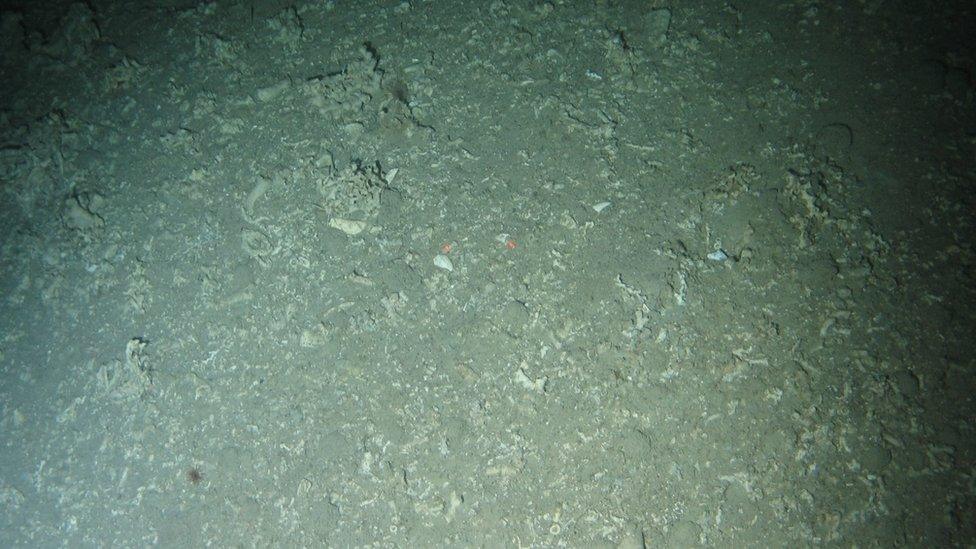Darwin Mounds coral reef scientists check for regrowth following trawler damage
- Published

Cold water coral at Darwin Mounds
Scientists are to revisit a rare deep water coral reef off the coast of Scotland to see if it has recovered following years of trawler damage.
Known as the Darwin Mounds, the corals were discovered in 1998 and later declared a marine protected area.
The reef provides a habitat for marine animals, but has been very slow to recover following the damage.
The expedition is the first for eight years and will use unmanned submarines to check if the coral has regrown.
Still to recover
The team will use a three-D imaging system to provide a detailed map of the area, measured at about the size of one hundred football pitches.
The Darwin Mounds lie 1,000m (328ft) beneath the surface of the North Atlantic about 115 miles (185km) off Cape Wrath in Sutherland.
The habitat is an extensive area of sandy mounds, each about 100m (328ft) in diameter and 5m (16ft) high.
In 2003, the area was given Marine Protected Area status to prevent further damage.
Scientists last examined the coral reef in 2011 and found it had still to recover from the deep-sea trawling.

Coral broken by deep-sea fishing at the Darwin Mounds
A team of scientists and engineers, led by the National Oceanography Centre (NOC) and University of Southampton, has set off for the mounds to make a follow up check on the slow-growing coral.
Robotic underwater vehicles will be sent down to the reef once the team is on site.
'Know very little'
The expedition's chief scientist Dr Veerle Huvenne said: "I really hope we will find evidence of coral recovery.
"Long-term repeat surveys in the deep sea are very rare, which means we know very little about how habitats and ecosystems evolve over time, be it in a natural or human-impacted state.
"Our expedition to the Darwin Mounds will bring back new insights, no matter what we find."
Scientists from the Joint Nature Conservation Committee, University of Edinburgh and Argyll-based Scottish Association of Marine Science are also taking part in the study.
The mounds and reef were discovered in 1998 by NOC scientists, who named the area the Darwin Mounds after their research ship, RRS Charles Darwin.
- Published18 June 2019

- Published27 July 2018
